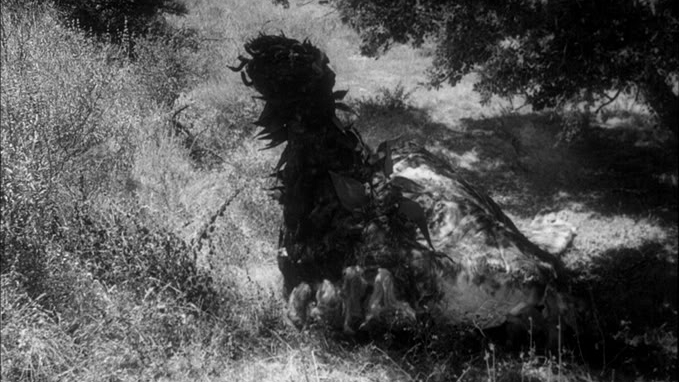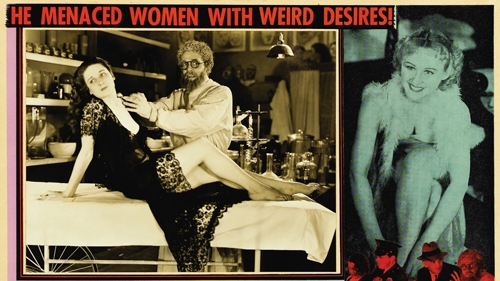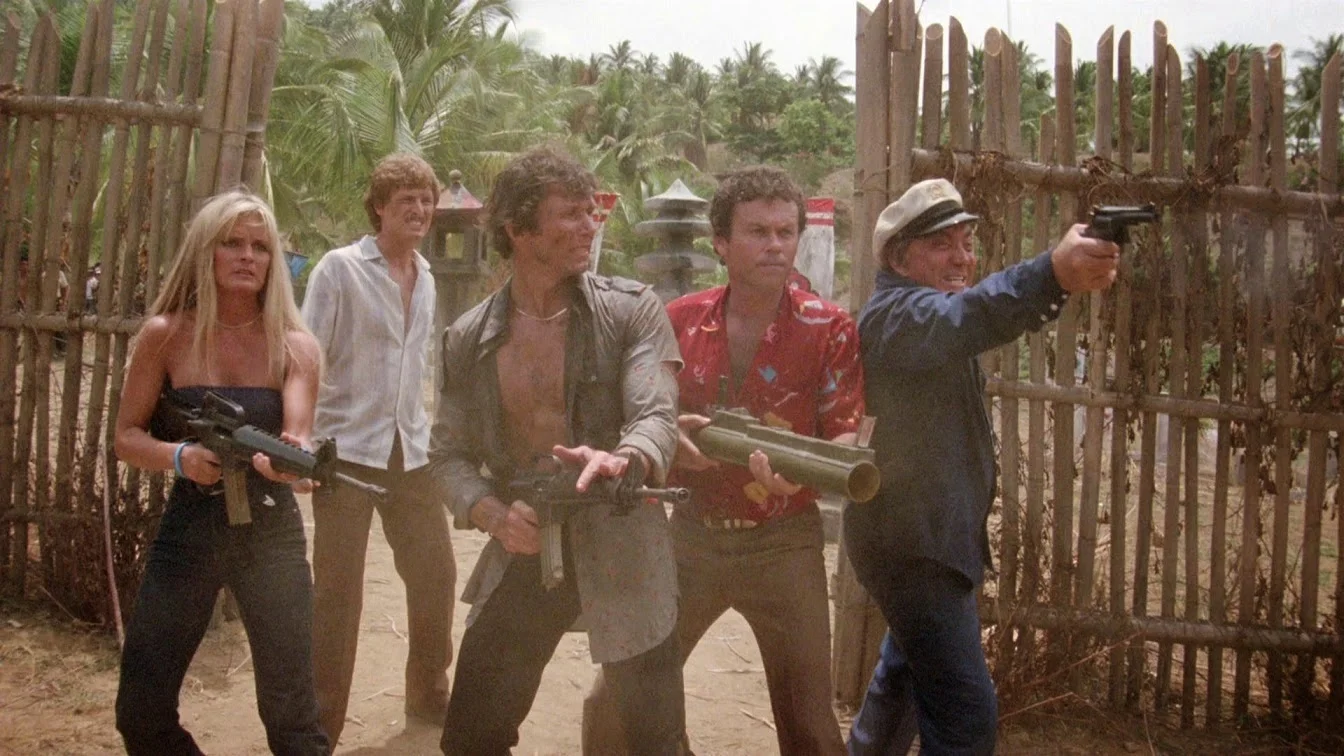Schlock Value: The Creeping Terror (1964)
“The Worst Film Ever Made” is a title that gets used fairly frequently, so much so that I often wonder if such a title could ever be objectively true. Over the years, many movies have been labeled as such (Plan 9 From Outer Space, Manos: The Hands of Fate, The Room), and this week’s film is no different. Originally intended to be a quick money-maker to play at drive-ins across the country, The Creeping Terror was unleashed on the world in 1964 and has since gone on to achieve international notoriety as one of the worst science-fiction films ever made, getting the honor of its own episode of Mystery Science Theater 3000, and now, is the subject of the new documentary, The Creep Behind the Camera from Synapse Films.
Directed by A.J. Nelson (aka Arthur Nelson, Vic Savage), The Creeping Terror tells the classic story of an amorphous alien being that arrives on Earth and begins terrorizing a small town, devouring its residents. Now, much has already been written about the quality (or lack thereof) of the film, but is it really the worst film ever made? Quite possibly.
The film begins with voiceover narration (which continues for the duration of the film, much like The Beast of Yucca Flats) as an alien spacecraft lands near a pond in the fictitious Angel County, California. Deputy Martin Gordon (played by A.J. Nelson himself) encounters the craft as a giant, plant-like slug monster emerges. He manages to escape, but later on, a forest ranger and the town’s sheriff visit the craft and are killed by a second creature when they climb inside to investigate. Gordon, now the temporary sheriff, teams up with renowned scientist Dr. Bradford and military commander Col. James Caldwell. The creature crawls across the town, devouring a group of picknickers, an old man and his grandson, a woman hanging her laundry, and a crowd of people at a local dance hall (all of whom basically have to feed themselves to the monster’s vulva-esque mouth opening because the costume is so cumbersome, the puppeteers inside could do little more than shuffle around at a snail’s pace).
Meanwhile, Gordon, Bradford, and Caldwell quickly get to work on a solution to the problem. The one thing they know is that these creatures are simple, “biological sample eaters” who transmit their data analysis back to their home planet via microwaves. While Bradford is determined to preserve them for his own scientific research, Caldwell believes they must be killed, and calls in the troops to eliminate the alien threat before they get a chance to send any information back home.
Now, the level of sheer incompetence on display in The Creeping Terror is dumbfounding. The already wooden acting is rendered useless by all of the narration, the quality of the monster is wildly inconsistent, and there’s so little of it that much of the film had to be padded with a number of sequences that either run way too long or are completely useless just to get the runtime up. One has to wonder how it ever got made in the first place. Fortunately, Pete Schuermann’s docu-drama The Creep Behind the Camera provides some answers to that question. Similarly to Bride of the Monster and Plan 9 from Outer Space, getting The Creeping Terror from script to screen required a lot of manipulation and empty promises from its director, A.J. Nelson (and a lot of post-production, thanks to the film’s main financier, William Thourlby). But unlike Ed Wood, Nelson had no great desire to tell stories or make art. He was only there for fame and fortune. Through talking head interviews with William Thourlby, screenwriter Allan Silliphant, Nelson’s first wife Lois Wiseman, and a few others who knew him, along with dramatized reenactments, The Creep Behind the Camera paints a stark picture of just how much of a sleazebag piece of shit A.J. Nelson actually was. Not only did he mislead investors and exploit his crew, but he was physically abusive with his wife, whom he cheated on many times, he relentlessly stalked celebrities (including Mamie Van Doren and Lucille Ball), had run-ins with Mickey Cohen’s boys, accidentally shot Carl Switzer (Little Rascals’ Alfalfa), abused all sorts of drugs and alcohol, peddled child pornography, and that’s only some of his sordid history.
Schuermann goes for an intentionally over-the-top, campy style for the reenactments, and it’s easy to see why. Unfortunately, this frequently undermines the seriousness of the subject matter. I mean, it’s really difficult to laugh at Nelson’s ineptitude as a filmmaker after you see him beat his wife. These sequences also bounce around a bit to different parts of the narrative, making the timeline difficult to follow, and they often go on for much longer than they should. To his credit, though, Josh Phillips appears to be having fun playing Nelson, dialing his performance to eleven, and is downright terrifying for much of the film.
So, is The Creeping Terror the worst film ever made? Probably. It’s certainly the worst film I’ve ever seen. Guys like Ed Wood and Tommy Wiseau may have been terrible filmmakers, but, at least, they had a passion for the medium that shows through in their films and makes them fun to watch. A.J. Nelson only wanted to make a quick buck and get laid while doing it. As a result, The Creeping Terror is a boring, unengaging chore of a film, and it’s a miracle that it was able to be edited into a coherent narrative. The story of how it got made, however, is anything but boring. It’s truly a tale that needs to be seen to be believed.
The Creeping Terror is available in Mill Creek Entertainment’s 50 Horror Classics box set, but I’d recommend picking up Synapse’s new The Creep Behind the Camera Blu-ray, which includes a 2K scan of The Creeping Terror, plus an audio commentary, behind-the-scenes featurettes, deleted scenes, and a bunch of other extras.














